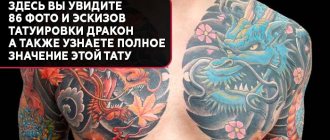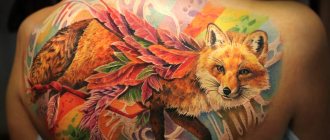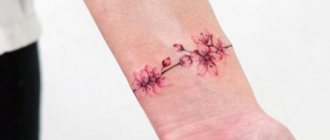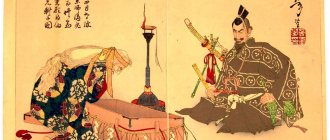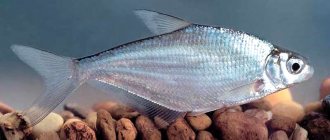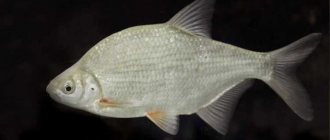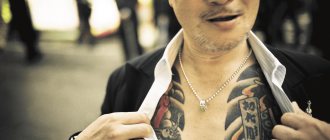Author: Eva Tushenkina
04 June 2021 18:40
Community: Historical facts
Tags: Historical facts Branding Japan educational tattoo tattoos Yakuza facts
3772
9
In Japan, the art of tattooing originated a long time ago and has a long history, and is also associated with some prohibitions and social stigmatization. The first images of tattoos date back to 5000 BC. e. - the Jomon period - and were found on clay figurines (both on the body and on the face).
0
See all photos in the gallery
The first written mention dates back to the 3rd century AD. e. and found in the text "History of Chinese Dynasties". It states that Japanese men tattoo their faces and decorate their bodies with tattoos, and this is a normal tradition in Japanese society; however, in the Kofun era (3rd - 6th centuries AD), mentions of tattoos took on a more negative connotation.
Features and Benefits
The traditional national hobby of tattooing is one of the oldest and most primitive activities. The original Japanese-style tattoos were discovered and tested several thousand years ago. European monarchs, famous in history, turned to the masters of the famous country to decorate their bodies.
One of the most significant and plausible versions of Japanese tattoos suggests that this activity appeared in the 5th century and came to Japan from Chinese traditions, where decoration of this kind was practiced already in the 6th century. Chronicles of the 3rd century AD they say that by the drawings depicted on their faces, it was possible to distinguish ordinary people from princes and representatives of noble families.
Another version of the legends tells that body painting specialists in Japan began to practice their craft because of the hobbies of the Aina people, whose inhabitants were located not far from Japan. A fairly common Japanese myth tells that the ruler of an ancient family conquered the most famous queen only thanks to the beautiful tattoos depicted on his face.
It is for this reason that until the 11th century AD. Only rulers could paint faces and other parts of the body. After hundreds of years, other representatives of social levels began to get tattoos. The very first images on bodies were not made with needles, but were applied with hard spines of various plants.
Tattoo artists in Japan enjoyed special honor and respect, as they were considered great and gifted artists. One of the many legends says that tattoo artists initially worked with the inventors of engravings, who made initial sketches on the body, and after that the masters stamped them.
Another theory suggests that tattoo artists themselves were engaged in engravings, and after that they simply changed their occupation. Despite numerous versions, training in tattoo techniques has always been similar: for 5 years, the beginning artist was an apprentice performing the work of a floor polisher. He also created a mixture of different paints, and most importantly, he studied deep artistic drawings.
In Kojiki, one of the cities where one of the earliest monuments of writing is located, two versions of Japanese-style tattoos are told. The first type marked people of rich nobility and high place in society. The second one marked the criminals. Between the 4th and 6th centuries AD. body images were not a sign of censure, however, at the end of this period, attitudes towards body images changed greatly.
Historians say that tattoos in Japan made a person an outcast from society. Thieves or traitors had a specific hieroglyph pricked on their foreheads, because of which the person was considered trash for the rest of his life.
At the end of the 17th century, priests and geishas also began to depict the designs they liked on their bodies. During the same period, the tactic of “tattoo punishment” was introduced, which soon replaced the more brutal execution of cutting off the ears or nose of the criminal.
The only ones who could escape this punishment were the samurai. “Shameful” tattoos were applied to such people as swindlers, thieves and extortionists. Counterfeiters were also subject to this punishment. Criminals were outlined on their finger and tattooed with a black ring for each crime they committed. This “punishing” practice lasted for 150 years.
A little later, Japanese tattoos were applied to courtesans to attract more clients. With the help of huge drawings (often covering the entire body), they could go out completely naked. The ornaments on their bodies replaced their clothes. The face, palms and feet were the only places that were free of drawings.
Japanese tattoos as an art form - history
Anyone who has encountered or at least seen real Japanese tattoos in their life will agree immediately and unconditionally that this is real art.
And the history of their appearance is also not so simple. There are many versions. According to one of them, the Japanese borrowed tattooing from the Ainu, according to another, from the Chinese in the 5th century BC.
There is even a Japanese legend about how Emperor Jimmu conquered a beautiful girl with his tattoos (approx. - 711-585 BC).
More clear information comes from the period of our era:
- From 300-600 AD (note - Kofun period) tattoo in Japan becomes a certain mark for lawbreakers - it was used to “punish” robbers until 1600-1868. (note - Edo era). This is a punishment for me too, many thought. But in those days, this punishment implied not just the appearance of a picture on the body, but also very specific consequences: the criminal was not given assistance, was not hired at all, and no one wanted to communicate with him either. That is, the person was taken outside the boundaries of a law-abiding society once and for all. The images differed in different provinces, but the meaning remained the same - the “stamp” on the forehead (hieroglyphs - villain, dog) immediately identified the criminal. They also tattooed the left biceps/arms with a 2nd line or tattooed a circle on the left/shoulder.
- In the same era (Edo), illustrations for the Chinese work “River Backwaters” and Kuniyoshi’s prints, which depicted heroic men with tigers and dragons on their bodies, became popular. Artists used the same tools for tattooing as for creating engravings.
- The end of the Edo period was marked by the fall of the Tokugawa regime, and Japan opened its doors to foreigners. True, for residents of Japan the ban on tattooing remains strict. Among Europeans, sailors were most attracted by samurai tattoos. Over time, more important people frequented Japanese tattoo parlors - the Greek Queen Olga, George 5 V and even the young Emperor Nicholas II.
- The ban on tattooing lasted until 1945 , when it was legalized again. But, given the direct connection between Japanese tattoos and the yakuza, the associations have not changed. Even today, in most public establishments in Japan, tattooed customers are not welcomed (strictly prohibited).
Choosing a location for application
Japanese style tattoos can be absolutely varied: erotic, cute, aggressive, artistic, etc. After choosing the design you like, special attention should be paid to the place where the future pattern will be applied.
This step is very important, so a person must choose that area of the body for a tattoo that he will not regret in the future, and also so that the image looks tasteful.
The location of choice is also important because different parts of the body have different pain thresholds.
The table shows the places of the human body and describes its pain sensitivity:
| Hand | Weak sensitivity |
| Back | Possible severe pain in the spine and kidneys |
| Breast | Intense sensitivity, especially on the collarbones |
| Stomach | High pain threshold |
| Buttocks | Weak sensitivity |
| Hips | Weak sensitivity |
| Feet | Moderate pain is possible as the technician's needle passes close to the bones |
Locations:
- Wrist from the inside. When a tattoo is applied to this area, the client will not feel much pain. The size of each person’s wrist is different, so the size of the future tattoo depends on this. This place is great for small symbols and any inscriptions. Statistics show that tattoos made on a woman's or man's hand heal quite quickly. If you need to hide the design, you can use jewelry or leather decorations, however, you should avoid them if the tattoo has not yet healed. This is necessary in order not to introduce infection into a still fresh wound.
- Ankle. More suitable for girls. Like the previous tattoo, it is almost completely painless. In addition, this area of the body has the advantage of not only a high pain threshold, but is also considered one of the most feminine body parts. Some people leave the choice to hearts or stars in this place, others prefer artistic designs. It’s easy to hide such an image with sneakers, stockings or high shoes.
- Ear. Most owners of tattoos on this area of the body claim that getting a tattoo on the ear is no more painful than having your ears pierced. The exquisite and symbolic patterns at this place look quite attractive. For people who want to stand out from the crowd, such a tattoo will be just right.
- Behind the ear. In Japan, only women get such tattoos. The place is painless and a good option for hiding a tattoo. If she wants to show the drawing to others, the girl can put her hair in a bun, and if she wants to hide it, she can simply let it loose. Very few nerve endings pass to this area of the body, and an image in this place can embellish a woman’s hairstyle.
- Forearm from the inside . Like the ankle, this area of the body is very feminine. When wearing clothes with short sleeves, it is difficult to hide such a tattoo, but you can always use a windbreaker or long sleeve. This body part is ideal for small images or phrases in any language.
- Biceps from the inside. It is very difficult to hide the image on this part of the body, but it is possible when wearing long sleeves. This area is located away from the bones, so pain during application will be minimal. But still, after the end of the session, the place will hurt a little. Important quotes or sayings that are relevant to a specific person will fit perfectly in this space.
- Finger from the side. Salon clients rarely get tattoos at this place due to the fact that it is unattractive. A good option is to get a tattoo with an inscription ending with a ring around your finger. To hide such a design, you can wear a regular jewelry ring. The area has an average pain threshold, but according to statistics, the pain quickly passes and the area heals.
- Shoulder. One of the most common options for tattooing. This should be taken into account if it is necessary to hide the image with sleeves. This place has a high pain threshold, but after applying the image it requires very careful care. It is advisable to have a person who can help bandage or lubricate the tattoo site, since it will be impossible for a person to reach some places himself. Also, after the sessions, it is necessary to choose a special sleeping position so as not to injure the wound fresh from the machine. In this area, you can do absolutely any tattoos; the selection of styles and colors depends only on the client’s wishes.
- Upper shoulder part. The tattoo in this place looks very cute and sensual, but the area has a low pain threshold because it is located next to the shoulder bones. As a rule, people have small or medium-sized shoulders, therefore, a small tribal design or any inscription will look on them.
- Front shoulder part. The application area is especially sensitive to pain, but this drawback is outweighed by a big advantage: if you need to hide the design, just wear a regular T-shirt or tank top. If a person wants to demonstrate the master’s creation, it will be enough for him to wear tight clothes with a deep neckline. Tattoos of any style, both color and black and white, look great in this area.
- Foot. Girls most often get tattoos at this place. The main disadvantage is that after applying the pattern you will have to wear shoes that will not injure the affected area. This area is ideal for both a small lettering and a large sized tattoo with an artistic design. The pain during application will be quite severe, but if the girl endures it, it will make all the suffering worth it.
- Upper back/neck. The place is a great area for a tattoo. If it is necessary to hide the design, a girl can simply let her hair down, and a man can wear a sweatshirt or bomber jacket with a collar.
When you collect your hair in a bun or ponytail, the image will attract the views of others. However, after the session, caring for the tattoo will be quite difficult, since the person himself will not be able to reach and treat the wound. A great place for a variety of inscriptions, but you need to choose the right font.
Oriental
Tattoo style Oriental (Japanese tattoo)
Japanese tattoo is an ancient art. The earliest evidence of tattooing in Japan is believed to be excavated clay Dogu figurines made at the end of the Jomon period (14,000-400 BC) of prehistoric Japan. Most of them have marks on the face, chest and shoulders that suggest tattoos. It is generally accepted that a tattoo signified social rank and also served to ward off evil spirits and wild animals.
The first written mention of Japanese tattooing dates back to the 3rd century AD. The chronicles described that people of noble origin in Japan wore patterns on their faces; tattooing was the privilege of the nobility. Gradually developing and becoming more complex, it turned from simple drawings into real art.
But starting from the 7th century, decorative tattooing fell into official disfavour and began to be used as a punishment. Certain symbols were used to indicate the severity of the crime and even the location where it was committed. People with such markings were ostracized by their families and excluded from public life. Therefore, such punishment was very difficult for the Japanese.
This continued until the end of the 17th century, when penal tattooing was largely replaced by other forms of punishment. One reason is that decorative tattoos became popular and criminals covered their penalty designs with large decorative ones. Hence the historical origins of the association between tattoos and organized crime in Japan. Tattoos are becoming a distinctive feature of the Yakuza (Japanese mafia). Because of this connection, tattooing was outlawed. However, the ban did not prevent the growth of the popularity of the latter, especially among representatives of lower social strata: workers, artisans, firefighters, geishas. The bans did not apply to foreigners, and in the 19th century the best masters opened their studios, whose unique art attracted respected clients from abroad, including royalty, such as King Frederick IX of Denmark, Edward VII of England, and Nicholas II.
The Oriental style includes three main directions: irezumi, gaman and kakushi-boro.
Irezumi is associated with the underworld because... Initially, the purpose of complex patterns was to hide shameful signs of punishment. And later, such a painting became an indispensable attribute of Yakuza representatives. The most striking and popular theme of this style is the Japanese dragon, a symbol of unlimited strength, power and wisdom. The image of a dragon, its size, color could tell about its owner’s belonging to a specific group, and his place in the hierarchy.
Haman was considered a privileged style; it adorned noble men, warriors who distinguished themselves in battles and in service for the good of society, emphasizing their strength and courage, demonstrating high human qualities.
The third direction of Kakushi-boro is the most unusual and interesting. These were women's secret drawings. Rice powder was rubbed into special cuts on the body, and the drawings appeared only in moments of strong excitement or taking a bath. So only those closest to them could see them.
The traditional Japanese tattoo consists of one main design that covers the back of the body and extends to the arms, legs and chest, shaped like a kimono. The design is interrupted at the neck, ankles and wrists so that the tattoo can be hidden under clothing. The design requires a significant investment of time, money and emotional energy. The work is performed using a traditional tebori instrument, which is a needle attached to a long bamboo stick. It is believed that it is the traditional tool that allows you to create a unique design. It sometimes takes more than one year to create a complete pattern. .Not everyone can endure the rather painful procedure of applying a tattoo for a long time, required to create complex multi-color compositions. But the ancient technology is gradually fading into history. Modern craftsmen increasingly use electric needles in their work, replacing tebori with them.
When creating their works, the masters drew inspiration from spiritual legends and philosophical parables. Therefore, each plot carries a certain meaning and is full of encrypted symbols. Dragons, as a symbol of wisdom and self-confidence, carps, symbolizing courage, a tiger, as a symbol of fearlessness, a snake - a symbol of protection from troubles and diseases, peony, a flower of wealth and prosperity, sakura flowers, a symbol of the short life of a warrior and fleeting youth, hieroglyphs, samurai and geisha. Here is a small list of the rich palette of patterns used by Japanese tattoo artists. Not only individual symbols have meaning, but also their combination and location on the body, which is why Japanese tattoos are asymmetrical. The designs are usually bright and colorful, with a clear emphasis on the main motif and a decorative outline. The main pattern is often framed with small details in a single composition, which also includes body parts such as nipples or the navel as elements. It is important to understand the elements of traditional design, their combinations and meanings, which is the main difficulty of Japanese tattooing. Mastering this technique requires serious and in-depth study of the subject.
It is believed that there are no more than 100 artists left in Japan who master the traditional style of tattooing. Despite its rich history, in modern Japan the presence of a tattoo is generally perceived negatively, especially by the older generation. This is due to the fact that the tattoo is considered a symbol of belonging to the underworld, the yakuza. So, having a tattoo can, for example, negatively affect your professional career. More than half of Japanese hotels are not allowing visitors with tattoos into public bathing areas, and this applies not only to local residents, but also to foreign tourists.
Masters of Oriental style / Japanese tattoo (Oriental)
Styles and colors
Tattoos in the Japanese style are usually done by artists in 2 main versions: artistic tattoo and visual. The first is the most beautiful and common among both girls and boys. You can depict any animal, painting, nature, or even a photograph of children or a loved one. The color of the applied image depends entirely on the client’s wishes. As a rule, Japanese-style tattoos use bright colors that can attract the attention of others.
A visual tattoo can come in different forms: inscription, stencil, “tribal”. Depending on the woman’s wishes, the master can apply a color or black and white design to the body.
Inscriptions made in various languages are especially popular today.
- Tribal is a type of tattoo in the image of flames, which most often depict a simple pattern or animals (dragon, lion, tiger, etc.). As a rule, it is applied in one color.
- Casual style. It is very popular because it can depict the desired picture or image in an artistic style. It is possible to use different colors.
Japanese style tattoo
- Old school style. A colorful, bright image that reflects both various types of animals and inanimate objects (flower, dagger, etc.). It is very popular among musicians.
Snake tattoo meaning.
Snake (Hebi). It is believed that snakes are endowed with supernatural abilities, such as: protection from troubles, diseases, protection from misfortune, and they can, like dragons, cause rain. Snakes are able to transform into the form of a person, especially into the form of an envious, vengeful and dishonest woman. One of the stories about such a transformation is the tragedy of Kiyohime and the priest Anjin. But not all myths about snakes are bad; many shopkeepers have an image of a snake coiled around a hammer hanging at the entrance; this image is believed to bring good luck and prosperity.
Tiger tattoo meaning
The tiger (Torah) in Chinese culture is considered the most important of the land animals, symbolizing strength, courage and longevity. It is believed that tigers can ward off demons, disease and prevent misfortune. In many ancient texts, one can see that the tiger fights with demons (They) on the side of “Shoki” (Zhong Kui - in China), the conqueror of demons. There is a belief that wearing a tiger skin on your back will help you get rid of any pain and be cured of all diseases and no Japanese demons are scary. The tiger is one of the four holy animals, a symbol of the north and autumn. Tigers also have control over the wind.
The meaning of Japanese tiger tattoos and the style of the tattoo can vary depending on the scene in which the tiger appears. A popular tattoo depicting a fighting dragon and a tiger symbolizes the duality of all things, where the dragon corresponds to the masculine principle “yang”, and the tiger corresponds to the feminine principle “yin”, which also symbolizes the underworld and the west. The dragon holds a flaming sphere in its paw. This is the Moon, which he periodically swallows and spews out. The fight does not bring victory to either the dragon or the tiger, and the legends say that this duel ends in friendship and harmony. On tattoos with images of heroes in scenes with heroes, the tiger appears as an undoubted evil, which is invariably defeated. In the novel Suikoden, there are several characters who fought and defeated tigers. This is also a very popular plot for irezumi.
Hero of the novel "Suikoden" Gyoja Busho, Engraving and Engraving Hero of the novel "Suikoden" Ritetsu Gyu.
One of them is Gyoja Busho (aka Wu Song in the Chinese version), who, on Mount Keiyo, killed a man-eating tiger that killed 25 people. He managed to deal with it with his bare hands. Another character in the same novel is Kokusenpu Riki (called Ritetsu Gyu) (Xie Jen in the Chinese version), who killed three tigers with a sword.
Makatsuge
Makatsuge. Tattoo fragment.
Makatsuge (half fish - half dragon). The legend of the carp, which managed to break through the waterfall to the Dragon Gate and turn into a dragon, became so popular that the carp acquired a traditional meaning as a symbol of perseverance, struggle and a fish that brings good luck. One legend says that when Confucius had a son, the ruler sent him a huge carp, and from that time on, the carp began to be a symbol of male strength. The tattoo itself, depicting a carp with a dragon's head - makatsuge, denotes the desire for self-improvement, courage and perseverance, and perseverance in achieving goals, despite difficulties. Tattoos with images of makatsuge are traditionally made only for men, as they also symbolize male sexual energy.
Sachihoko
Shachihoko. This mythological monster is depicted with the head of a tiger and the body of a fish, which is covered with poisonous spines. On land, the shatihoko can turn into a tiger. It is believed that these creatures are in the sea near the whales, enforcing the law of the sea, according to which “a whale cannot eat large fish,” and if a whale violates it, they climb into its mouth and kill it with their poison. In the Middle Ages, shatihoko statues were placed as skates on the roofs of samurai castles. Syatihoko is not only a warning that one should not offend the person wearing this tattoo, but also serves as a symbol of justice and strict adherence to agreements.
Also read on our website: Sketches in Old School style. Tattoo Flash by Official Tattoo Brand.
The meaning of a turtle tattoo
The turtle is a common image in Eastern mythology, a symbol of wealth, wisdom and longevity, as it is believed to be able to live forever unless killed. In China and Japan, a turtle overgrown with algae, which the Japanese call “Minogame” (“turtle in a cloak of grass”), was especially respected. She is credited with supernatural abilities, the main of which is the ability to foresee and predict the future.
Bisi. Turtle is a dragon.
The dragon turtle (also called the dragon turtle or Bisi) is a mythological animal, a symbol of the harmony of the universe associated with the philosophy of Feng Shui. According to ancient Chinese legend, a turtle (the embodiment of truth and wisdom) gave its body to the spirit of a deceased dragon in order to strengthen the protective abilities so necessary for the emperor and the country. The resulting monster combines the courage and ambition of a dragon, and the wisdom of a turtle. This mythological animal is believed to promote favorable changes in a person's career.
Yinglong. Winged dragon.
Yinglong, according to Chinese tradition, was a winged dragon, the lord of rain, who knew how to collect and accumulate water. In some Chinese legends, he is the emperor's patron, first drowning his enemies and then saving the country from flooding. In Japan it is known as Hai Riyo.
Meaning of hawk tattoo
The hawk (Taka) symbolizes daring, courage, nobility, and warlike spirit. There is an old proverb that says: “No Aru Taka Wa Tume Okakusu” - a smart hawk hides his talents. Therefore, the image of a hawk is used to describe a talented person who does not shout about his skills.
Meaning of Japanese crane tattoo
Crane. In the Far East, cranes have always enjoyed special honor. In China, cranes were considered messengers of the gods, immortal demigods Xian rode them, and cranes also accompanied the dead to the heavenly lands. The crane was considered an attribute of the god of happiness Wu-fu, who bestows long life, and therefore the bird itself became a symbol of longevity, and the embodiment of the bright principle of yang. Following the Chinese, the Japanese also considered the crane a sacred bird. The Japanese crane has become the hero of many legends and fairy tales. The Japanese believed that cranes could turn into people, and often took the form of wandering monks and did good deeds. As in China, the crane is a symbol of longevity and good intentions.
Meaning of Japanese pheasant tattoo
Pheasant. A bright and colorful bird, the pheasant, in the Far East was associated with sunlight and dignity. In China, the pheasant symbolized knowledge, beauty, luck, virtue and organizational skills, and therefore became a badge of honor for high-ranking officials. According to popular belief, the flapping of the wings of these birds was capable of causing a thunderstorm. In Japan, the pheasant was a symbol of the sun goddess Amaterasu and her messenger. In addition to prosperity, the Japanese pheasant symbolizes maternal love and protection from troubles.
Meaning of Japanese toad tattoo
Japanese toad tattoo
Toad or frog. In Chinese and Japanese mythology and folklore, the toad was considered a magical creature with special “toad magic.” It was a symbol of good luck and wealth, and among the Japanese it also symbolized wanderings and travels. According to legend, toads were malicious and vengeful creatures, into which evil and greedy people were often reborn. However, Buddha was able to guide the toads to the path of truth, and they began to help people, and, paying for previous evil, often gift good people with gold coins, which they spat out of their mouths. Toads were believed to teach those who achieved immortality flight and freedom of spirit, and mentor those who devoted themselves to Buddhist service. They became indispensable companions of sages and healers. The meaning of the toad is the material and spiritual wealth of a person. The toad also helps to return home safely after long wanderings.
Baku are creatures that devour bad dreams and nightmares.
Baku. In Japanese folklore, they are supernatural creatures that eat bad dreams and nightmares. Baku is depicted as a monster that has the trunk of an elephant, the eyes of a rhinoceros and the paws of a tiger. Baku is also protected from evil and disease. According to Japanese beliefs, when you have a nightmare, you should shout three times: “Eat your baku!” so that the nightmare does not come true.
Maneki-neko
Alluring cat tattoo Maneki-neko
Maneki-neko, which translates from Japanese as “Beckoning Cat” or “Calling Cat,” is a very popular symbol of good luck and prosperity in Japan. There are several versions about the origin of this good luck talisman, which talk about how the cat saved its owner or brought him wealth. The most common legend is that a cat saves a powerful daimyo from a lightning strike by luring him with his paw to the old, crumbling Gotokuji Temple. In gratitude for the rescue, the prince gave money for the restoration of the temple, and since then the cat with its paw raised has been an object of veneration among believers. In the images, Maneki-neko is holding an antique gold coin, which is related to another story about another virtuous cat. According to it, a grateful cat brought a sick poor man, who treated him to fish, two gold coins for treatment, which he stole from his rich owner. This and other stories eventually came to be attributed to maneki-neko. Maneki-neko is also a popular subject in Old School tattoos.
Also read on our website: Sketchbook Itinoshe Kenji | Traditional Japanese Tattoo
Daruma
Daruma. The doll is known under this name in Japan - tumbler, the prototype of the Russian vanka - vstanka and matryoshka. Daruma (Bodaidaruma) is the Japanese pronunciation of the name of Bodhidharma, who founded the Buddhist teaching known as Zen Buddhism. It is believed that he founded the famous Shaolin monastery in China, where he meditated for a long time, contemplating the wall. According to legend, his limbs atrophied, so the doll is made without arms and legs. Both the doll itself and its image on the tattoo should bring good luck to the owners.
Kirin. Mythical beast - unicorn.
Kirin tattoo
Kirin. This Japanese mythical beast - the unicorn - had a Chinese predecessor - the Qilin unicorn - the messenger of the gods, bringing good luck and prosperity, and can ensure a rich harvest and security. He descends from heaven to earth to herald the birth of a great man. For example, he appeared to Confucius' mother before his birth. Kirin also stands guard over law and justice, who can personally punish the guilty and save the innocent in court. Therefore, in Buddhism, Kirin personifies divine justice and righteous judgment. But in Japanese folklore, Kirin can demand a sacrifice from a person seeking to gain power and strength from him. Kirin is usually depicted as a deer with a scaly body, a horn in the forehead, and a bushy mane and tail. His body is shrouded in flames, and he can breathe fire from his mouth. A tattoo depicting Kirin, as a rule, like a dragon, is protective in nature and keeps a person from doing bad things. However, it is also caused by people who want to dramatically change their lives, to find new prospects for further development, and in this case Kirin should help choose the right decisions to achieve success.
Meaning
- Kintaro is an image of a character in many Japanese myths who defeated a huge carp. Suitable for both female and male genders.
- Kyumoryu shishin is a Japanese mythological character. He is one of the founders of martial arts in Japan. Can be depicted on both girls and men.
- Fudomeo is a creature from Buddhism who guards huge treasures. Such an image is applied only to men belonging to the Yakuza.
- Teu Jun is a hero holding a huge knife in his teeth. Symbolizes strong fortitude and the ability to wield bladed weapons. Typically applied to men.
- The dragon is a mythological creature, especially common in Japan and China. It is a symbol of nobility and great strength. Applicable to both girls and men. As a rule, it is depicted in a multi-color version. Due to its high brightness, this tattoo is most often chosen by young people.
- The tiger is a sign of strength and courage. The inhabitants of the Land of the Rising Sun especially love and honor him. Despite the fact that these animals are not found in Japan, their image on the body is quite common in this country.
- Carp is a symbol of special courage and steadfastness. Japan has always been famous for tattoos made in a marine theme, so carp are often applied to the bodies of people in this country.
When choosing a design for a tattoo, the Japanese categorically do not recommend choosing snakes, since they are of the opinion that this creature brings only negativity to life.
- Sakura. A special bright tattoo, exclusively for Japanese women. It is especially popular among women because it has not only bright floral motifs, but also a special feature - the image allows you to appreciate the value of every moment lived.
- Dog Fu. The image of this creature is more reminiscent not of a dog, but of a lion, which is considered a brave and strong protector. This animal is depicted in an aggressive form, as if preparing to attack its enemy directly from the body of the bearer. In addition to aggression for its “master,” according to myths, the creature can protect and bring prosperity and good news to the house. The Japanese believe that such an image can protect a person from a negative encounter and from getting into trouble. Fu Dog is able to bring good luck and happiness, thanks to her keen sense of smell and fame.
How to choose a theme for a Japanese tattoo?
There are many themes and styles today. Any person will be able to choose a suitable motif, decide on the color scheme, location on the body where the tattoo will be placed.
Since the same topic can be presented in completely different ways, we would recommend, before making a final decision, to see how your future master works in his work environment, and to communicate with him in his free time. You will immediately appreciate both the level of professionalism and the quality of service, which is important when you are going to trust someone.
A tattoo professional can have a significant impact on a client's choice. He, of course, will not impose his vision of the topic, but he will save you from mistakes. Smart help in choosing a sketch has never hurt anyone. There are clients who come to the salon without any idea of what they want to get stuffed.
In these cases, the master, having assessed the texture with which he has to work, can put forward well-founded recommendations, suggesting, for example, to turn to the Japanese theme.
The subjects of Japanese tattoos are quite large-scale. These are bright pictures that are filled in order to get maximum attention to your person. As you can see in the photo, a high-quality tattoo in the traditional Japanese style will in any case be interesting to the observer, causing a wide variety of emotions.
The history of Japanese tattoo style is probably as deep as the history of the Land of the Rising Sun. Already the first Buddhist monks decorated their bodies with various symbols and hieroglyphs, texts of prayers.
Application techniques
Before tattooing begins, the artist will ask the client about any allergic reactions and general well-being. He also talks about possible side effects. After the session, the master gives detailed instructions on how to care for the applied pattern.
A Japanese-style tattoo involves drawing a sketch of the future image, which refers to the preliminary stage. To trace the drawing onto the body, paper is used that looks like a carbon copy from the outside. After the pattern “sticks” to the body, the surface is smeared with Vaseline in order to avoid the paint being washed off. After this, the specialist turns on the machine and begins the tattooing process.
The needle of the machine pierces the top layer of skin, called the stratum corneum, and then passes further to the depth of the hairline. This is where a small amount of paint pigment ends up. The master guides the machine along the contour of the drawing. The needle pierces the client's skin with great frequency and at high speed. An experienced master does this with great care, without unnecessary movements or displacement of the needle.
The main initial stage of creating a tattoo is the process of tracing the main contours with a machine. After they are filled with paint under the skin, the process of drawing shadows begins. At this stage, the specialist may use needles of different sizes, depending on the type of tattoo. It is worth considering that the needles for piercing the contour and applying shadows must be different.
Japanese-style tattoos, as a rule, are not done in one session. Most often, in the first session, the contours of the drawing are broken through, in the second, shadows are introduced, and in the third, adjustments and final eyeliner of shadows are carried out.
The process of creating a Japanese tattoo
Considering the traditional scale of Japanese tattoos, the artist spends several years on its execution. Tattooing tool - a bunch of bamboo needles . Less often - bone or wood.
Of course, it is extremely difficult to endure the pain of such a procedure for a long time, and it takes at least a week for the skin to heal, so the creation of a masterpiece takes a long time - at least 50 sessions.
Not everyone can withstand it - many leave the outline and refuse full-length painting.
So, how is the action itself performed?
The master (together with the “patient”) goes through 5 stages:
- Suji. First of all - a sketch! That is, a sketch of the composition on the body.
- Otsumi. The master secures the contour with 1-4 needles.
- Bokashi . The future drawing is filled with tones. The flowers are filled with a bunch of 30 needles.
- Tsuki-hari. Creation of separate image fragments, without shades.
- Hane-bari. At this stage, shades are created.
If the result is good, the master will definitely leave an autograph on the client’s body .
How to choose a salon and specialist
You should not choose a salon where the services of a master cost the least. As a rule, such offices are staffed by novice specialists gaining experience. It should be remembered that a tattoo is made for life, so paying a good amount for it once will be more justified than suffering afterwards, interrupting or removing a failed design. This is especially important for girls, since the above negative consequences will look very bad on a woman’s body.
Prices in each region vary significantly, so before getting a tattoo, you should look through reviews and price categories in each salon in the city and after that choose a more suitable place.
You should also know that a professional artist in the studio must have a medical chair, tattoo kits and many bottles with various products (vaseline, lidocaine, colorful kits). If the chosen specialist’s studio looks different, it’s worth finding a more suitable location.
Japanese Tattoo Meanings
Japanese Dragon Tattoo
The Japanese believe that Asian dragons originated in Japan before spreading to areas of Asia. However, Koreans and Chinese believe the opposite. Like all Asian dragons, Japanese dragons are associated with water and rain , rather than fire as in Europe, where they represent strength, wealth and ferocity. In Japan, the dragon represents generosity, wisdom and strength, which is used for the benefit of humanity. These positive traits are the reason why dragons are among the most popular characters in Japanese tattoo style.
Japanese Koi Carp Tattoo
One of the most popular themes for Japanese tattoos is Koi Carp . Koi carp are specially bred in China. In Eastern folklore, Koi are credited with qualities such as strength and bravery . It is known that the Koi in China always try to swim against the current of the Yellow River, but only a few manage to cross the place called the Dragon Gate. It is a common belief that those who do this will be rewarded by being transformed into dragons. From here comes the symbolism that defines a strong desire to succeed and the idea of transformation into something better.
Japanese Phoenix Tattoo
Legends around the world say that the Phoenix is a bird that burns in fire and then is reborn from its ashes. This tale exists in many cultures throughout history, including Greek and Roman mythology. The phoenix symbolizes rebirth and triumph .
Japanese Tiger Tattoo
Another powerful character in Japanese tattoos is the Tiger , which symbolizes courage and strength . Tigers are said to control the wind, and are often chosen for protective tattoos against bad luck, evil spirits and illness.
Japanese Lion Tattoo
The Fuu Dog or lion tattoo looks like a lion with pointed ears that resembles a dog. These tattoos are also used for protection . People become strong and courageous and “flock” other people with heroic aspirations.
Japanese Snake Tattoo
The snake has a wide range of symbolic meanings. They can be protective, able to ward off disaster, misfortune and illness. Snakes also represent wisdom and protection from the consequences of bad decisions. The property of renewing old skin with new one is associated with healing, regeneration, especially in Japan, with its ingenious medical remedies. Shedding the skin also represents the woman, who symbolizes the divine feminine.
Japanese Skull Tattoo
In contrast to the Western connotations of death, danger and doom, skulls in Japan are considered a positive representation of the natural circle of life . As a rule, the skull can also represent change.
Japanese Flower Tattoo
Japanese flowers have many meanings and are highly valued in Japanese decoration. The lotus represents understanding, knowledge, enlightenment. Cherry blossoms , which fade very quickly, are blown off the tree even when the slightest breeze blows. The Japanese see in them a reflection of their own mortality. Chrysanthemums are associated with the emperor and symbolize perfection, as well as happiness, joy and longevity. The rose symbolizes balance, everlasting love and new beginnings. A rose with a stem is believed to have a contrasting meaning of loss, defense and misunderstanding. Peony is called the king of flowers. It symbolizes elegance and wealth. Orchids represent courage, strength and power. Hibiscus has one meaning in Japanese culture - "tenderness".
Is it possible to do it yourself?
Getting a tattoo yourself is not the best way to save money or gain experience. If the client does not take care of his body and does not value it, then he is quite capable of getting a tattoo on his own. As a rule, self-made tattoos look poor and cheap. Because of this, a person has to turn to other masters to give the drawing a more beautiful look.
There are frequent cases of self-killing in prisons, but in modern society this is categorically not recommended.
Tattoo care
After applying a tattoo to the body, the artist gives detailed recommendations on how to care for his creation. You should carefully follow them and constantly monitor the condition of the recently made drawing.
Basic instructions:
- The tattoo should not be wetted immediately after it is applied to the body.
- It is necessary to use various ointments (Bepanten, Vaseline) for faster healing.
- You should stock up on baby diapers. 2-3 days after the session, you can lightly rinse the tattoo, removing excess paint. This must be done very carefully. After the excess paint is washed off, you need to dry the tattoo area, lubricate it with a certain ointment and carefully wrap it in a baby diaper. It is best if there is a person nearby who can help with dressings.
- Do not touch the tattoo when it begins to peel off. This is normal and a sign that the skin is healing.
- Before and after sessions, it is possible to take painkillers (Nise, Ibuprofen, Ketorol, etc.). But you shouldn’t get carried away with them. They will dull the pain only for a while, and when their effect wears off, the pain will manifest itself with great intensity. You should also not use strong painkillers (Ketorolac, Tramadol). They can only worsen the healing process of the tattoo.
Tattoos made in the Japanese style are still in great demand among residents of all countries.
Japanese tattoo today
Nowadays, due to its spread throughout the world, Western tattoos have gained popularity among Japanese youth , although the general opinion is still negative. Unlike the Western world, in Japan it is not easy to find a tattoo shop outside of tourist areas or areas with US military personnel. According to the president of the Japanese Tattoo Institute, Kunihiro Shimada , “there are only three hundred tattoo artists in Japan, largely due to government policies. Even today, tattoos are frowned upon in hot springs and public baths. If a person with a tattoo on his body wants to visit this establishment, he will be asked to at least cover the tattooed part of his body.”
In 2012, Toru Hashimoto, the mayor of Osaka, began a campaign to fire tattooed employees from organizations. Article written about him: “His mission is to get government officials to admit to having tattoos on their bodies. If they have, they should remove them or find work elsewhere." His beliefs are generally well received by the public, especially large companies who are afraid of tattoos.
